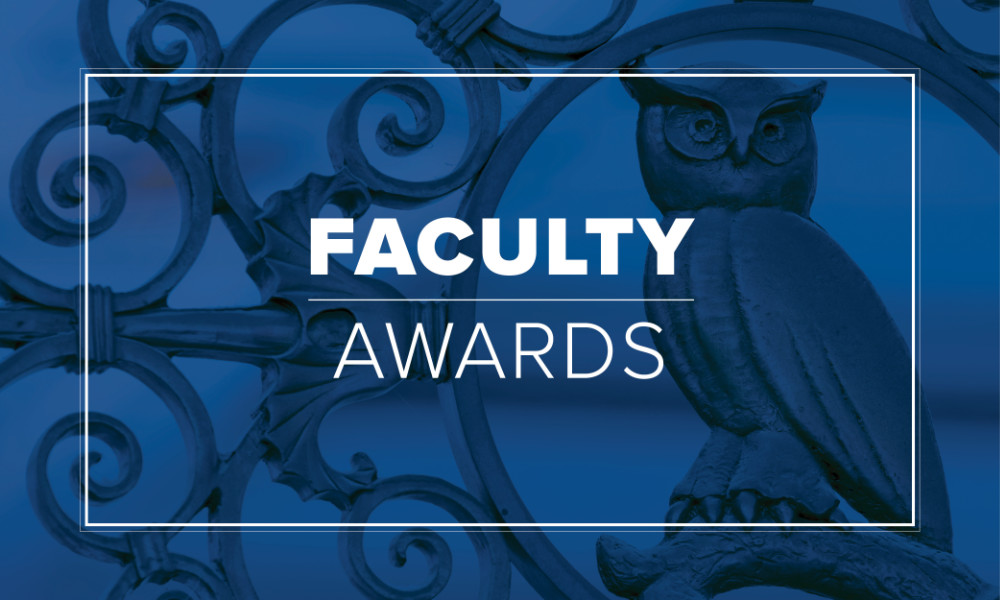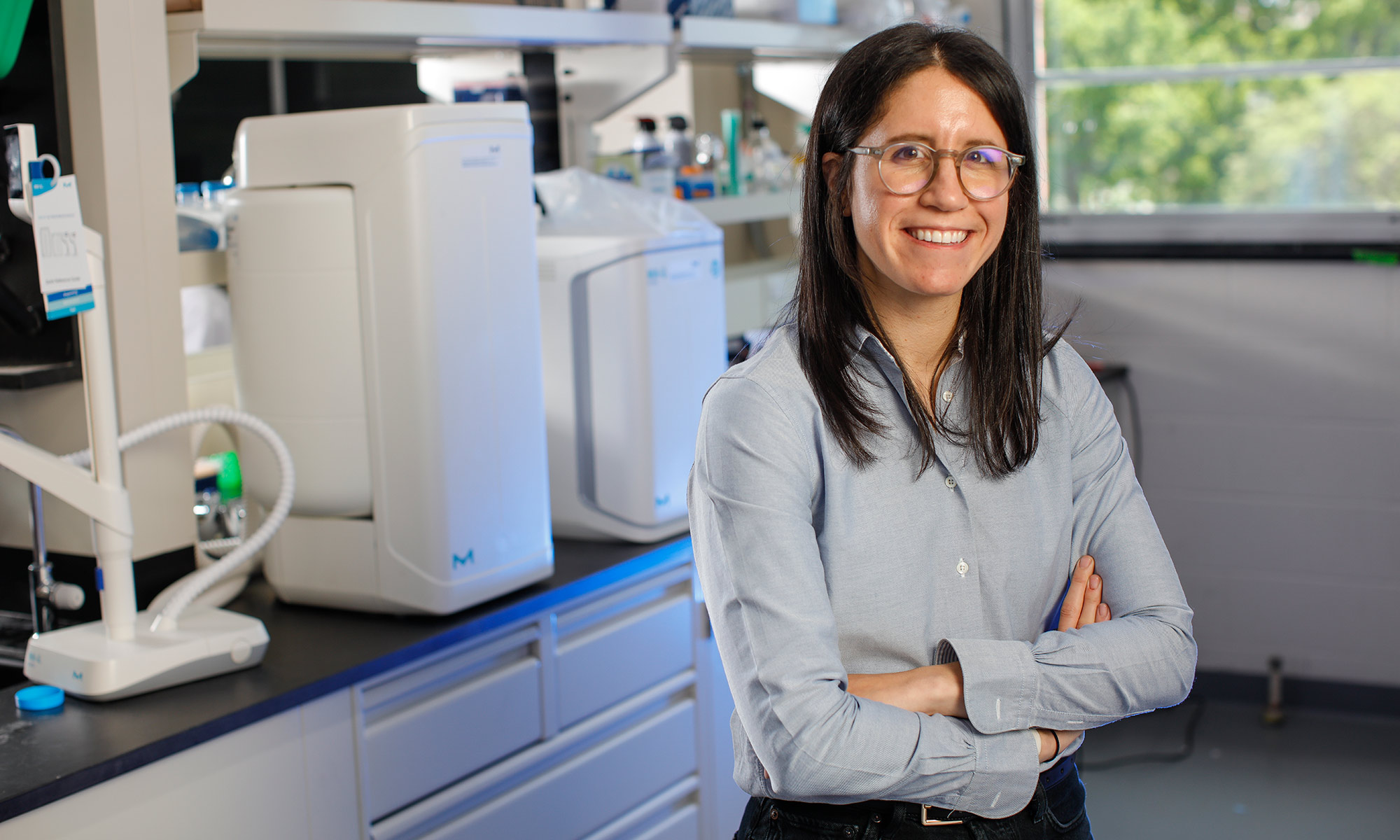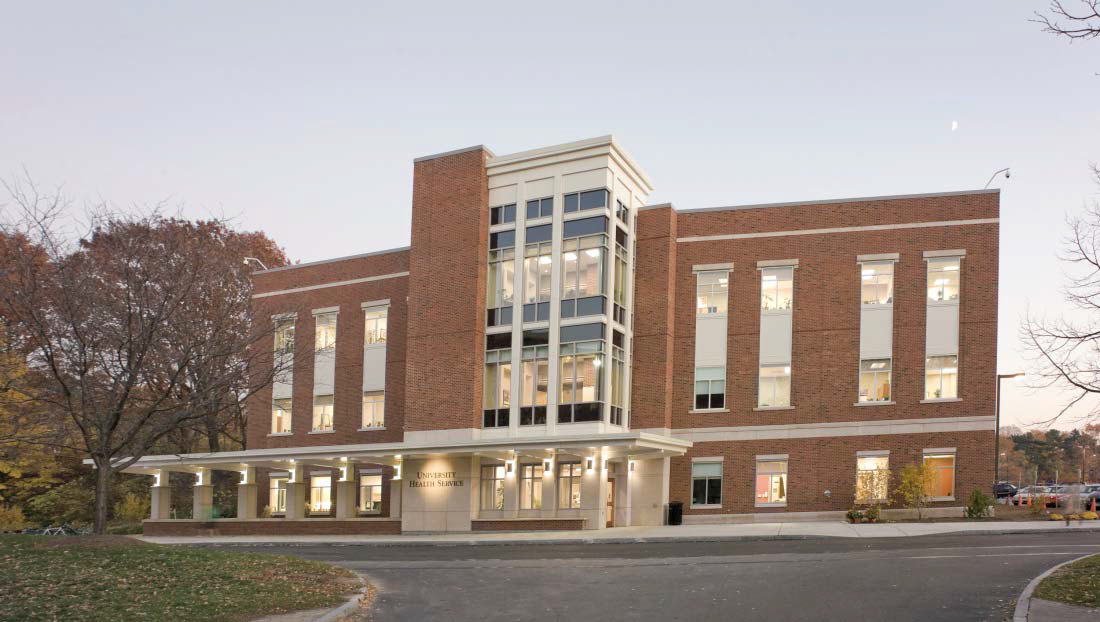Campbell, who has attracted record funding for the Laboratory for Laser Energetics (LLE) and fostered stronger relationships with the federal and state governments, academia, industry, and between LLE and River Campus, will step down in December.
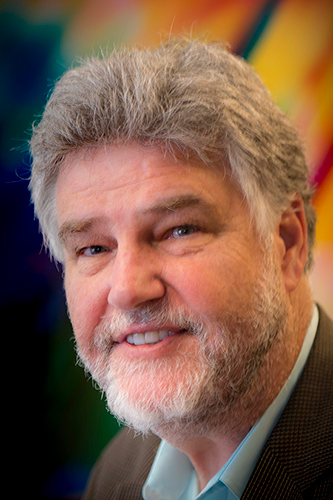
Michael Campbell, a scientific leader in laser science and plasma physics, who served as director of the University of Rochester’s Laboratory for Laser Energetics for the past four years, has announced he will retire on December 31, 2021.
Campbell will continue to carry out his duties as LLE director until the end of the calendar year and will remain as a consultant to LLE until a new director is named. Details of the University’s national search to find his successor will be shared in the coming weeks.
Throughout his 40-year career, Campbell has become an internationally known expert in inertial confinement fusion (ICF), high-energy-density physics, high-powered lasers and their applications, and advanced energy technologies. As director of LLE, Campbell increased the number of employees by more than 20 percent to nearly 400, including more than 50 graduate students. He also secured record funding for the laboratory.
Rochester President Sarah C. Mangelsdorf praised Campbell’s leadership in expanding the LLE’s capabilities and fostering relationships both with national laboratories and between the LLE and the River Campus.
“Mike has been invaluable to the LLE and the University of Rochester,” says Mangelsdorf, who is also the G. Robert Witmer, Jr. University Professor at the University of Rochester. “He has elevated the national profile of the LLE and has greatly expanded awareness of the University of Rochester among policymakers in Washington, DC. He has also worked to build strong connections between the LLE and other parts of the University of Rochester. His deep commitment, humor, collegiality, and artistry will be remembered.”
“Mike is a visionary leader, a brilliant communicator and advocate for science, and a wonderful person who is beloved by his staff,” says Stephen Dewhurst, vice dean for research at the School of Medicine and Dentistry and associate vice president for health sciences research for the University, who is currently serving a one-year appointment as interim vice president for research. “He is larger than life, in the best possible ways. He is also the only person I know who measures distance in nanoseconds (the amount of time it takes light to travel one foot). During his tenure, Mike has fundamentally changed the culture at LLE for the better, strengthened congressional and NNSA support for the Lab, and greatly enriched LLE’s relationship with the College.”
Campbell joined the University in 2015 as deputy director and was promoted to director in 2017. Prior to coming to Rochester, he was a senior scientist at Sandia National Laboratories.
Founded in 1970, LLE is the largest university-based Department of Energy research program in the nation. The laboratory is home to the OMEGA and OMEGA EP lasers, the most powerful laser systems found at any academic institution in the world. The LLE additionally operates the National Laser Users’ Facility, which allows as many as 500 additional scientists from all over the world to probe the extremes of temperature and pressure in laboratory-scale experiments.
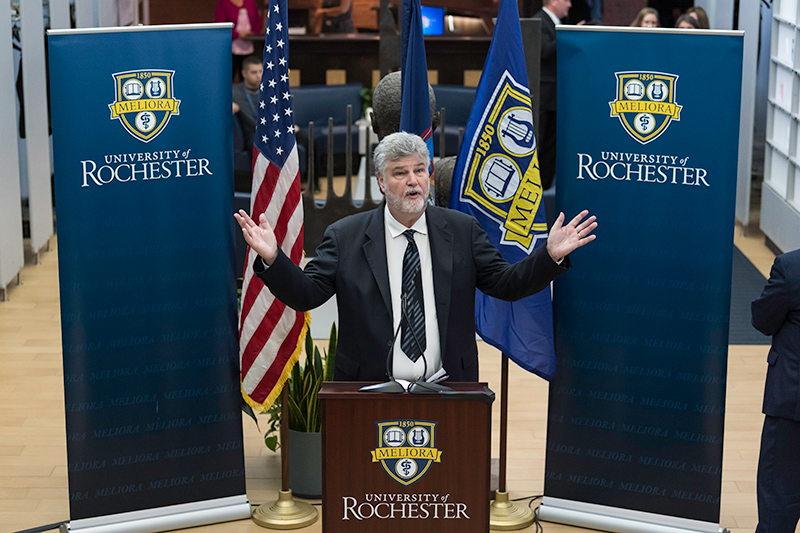
Under Campbell’s leadership and advocacy, LLE cemented its role as an international leader in research on fusion, high-intensity lasers and optics, and high-energy-density physics—an exploration of how atoms react under high-pressure conditions such as those at the interiors of planets. He has been an outspoken proponent of strengthening US’s leadership in these fields. This included the creation, in 2020, of the Center for Matter Under Atomic Pressures (CMAP), a National Science Foundation Physics Frontier Center, which brings together researchers across campus and at other national labs to better understand the physics of matter under extreme pressures.
“One of the things I set out to do as director was to expand LLE’s role across the University of Rochester campus, and I’m very proud to have done this with initiatives like the CMAP,” Campbell says. “During my time here, we’ve hired some world-class people and expanded our partnerships with other laboratories. I think we’ve really demonstrated the quality and impact of research at the University and at the LLE.”
Campbell’s efforts additionally involve expanding user access to the Omega Laser Facility and increasing program funding from $71.95 million to more than $89.43 million a year with a broadened sponsorship base among federal agencies. This includes finalizing a five-year (2019–2023), $410 million cooperative agreement from the US Department of Energy’s National Nuclear Security Administration (NNSA). Given the growth under his tenure, he is currently overseeing an approximate $40 million, 60,000 square foot expansion of LLE.
“NNSA has sincerely appreciated Mike’s leadership of LLE and his efforts to emphasize LLE strengths in contributions to the NNSA stockpile stewardship mission,” says Ann Satsangi, federal program manager at the NNSA’s Office of Experimental Sciences. “The longstanding partnership with LLE has contributed significantly to the accomplishments of the ICF program as a whole and to advance the science of high-energy-density. Mike’s strong communication with the labs and HQ, his good humor, and of course his cartoons, have been a delightful part of this partnership.”
LLE has a long tradition of innovating and advancing laser and optical technology. Campbell solidified LLE’s leadership in advanced manufacturing for its own program, its partner national laboratories, and other universities. This included design, construction, and installation of the DCS laser at Advanced Photon Source (APS) at Argonne National Laboratory and the development of the upgrade at the Department of Energy’s Stanford Linear Accelerator Center (SLAC) National Accelerator Laboratory.
As director, Campbell also worked to create a more diverse and inclusive research environment at LLE. He established a senior-level diversity manager position, with the primary goal of establishing strategies to increase workforce diversity in science, technology, engineering, and mathematics (STEM) related positions. He also established LLE High-Energy-Density Physics (HEDP) Equity Scholarships to increase the diversity of representation within and to draw the best talent to the HEDP fields. Additionally, at Campbell’s urging, LLE was accepted into a new program of the American Physical Society to increase diversity in physics departments and laboratories. In the City of Rochester, he greatly expanded access to research opportunities and scholarships to area high school students from diverse, underserved backgrounds, with the goal of introducing students to the many areas of science and technology involved in laser energetics research.
Campbell has won numerous awards throughout his career, including the Department of Energy’s E.O. Lawrence Award in 1994 for “his leadership in inertial confinement fusion and laser-plasma physics.” He was honored with the American Nuclear Society’s Edward Teller Award, the Department of Energy’s Excellence in Weapons Research Award, and the Leadership Award of Fusion Power Associates.
Other honors include election as a fellow of the American Physical Society, the Optical Society, and the European Institute of Physics.
Campbell has worked in various scientific and leadership positions at both federal laboratories and the private sector, including Lawrence Livermore National Laboratory (LLNL), General Atomics, Logos Technologies, and Sandia National Laboratories. While at LLNL, Campbell was instrumental in establishing the National Ignition Facility and the role of lasers in high-energy-density research in support of NNSA’s stockpile stewardship mission. He has provided advice and strategy as a member of numerous committees, including at the National Academy of Sciences, Los Alamos National Laboratory, Berkeley National Laboratory, and Lockheed Martin Corporation.
He received degrees from the University of Pennsylvania, Princeton University, and the University of Western Sydney. He has authored more than 250 scientific journal articles and holds five patents, including the design of the first laboratory x-ray laser, for which he was awarded the American Physical Society’s John Dawson Award.
Read more
 Laser-driven experiments provide insights into the formation of the universe
Laser-driven experiments provide insights into the formation of the universe
Researchers at the Laboratory for Laser Energetics are the first to experimentally measure the mechanism responsible for generating astrophysical magnetic fields.
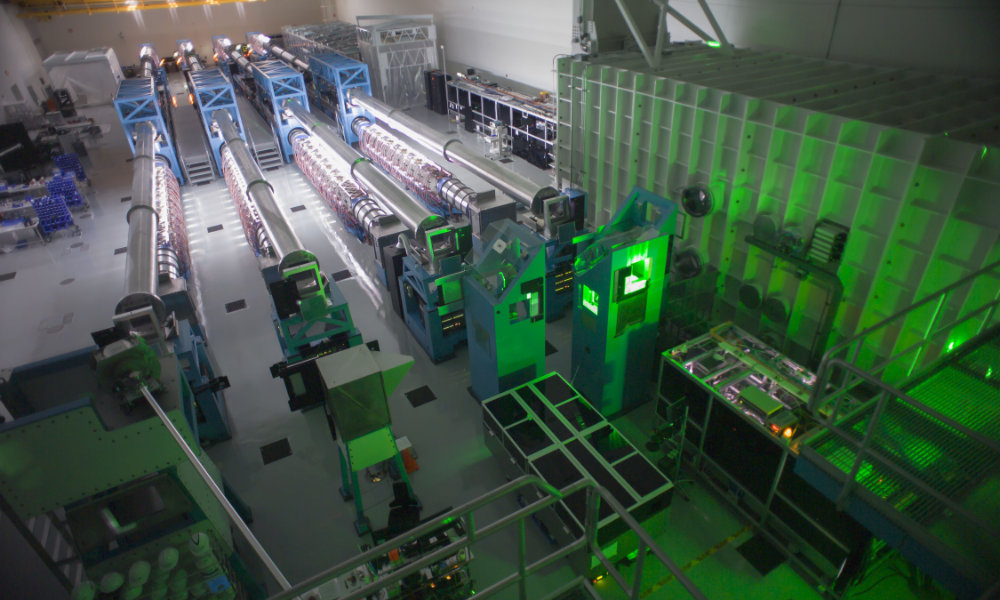 University expands access to OMEGA EP laser with Energy Department’s LaserNetUS initiative
University expands access to OMEGA EP laser with Energy Department’s LaserNetUS initiative
The funding, distributed among 10 LaserNetUS institutions, will provide beamtime for researchers across the globe to conduct laser experiments using network facilities.
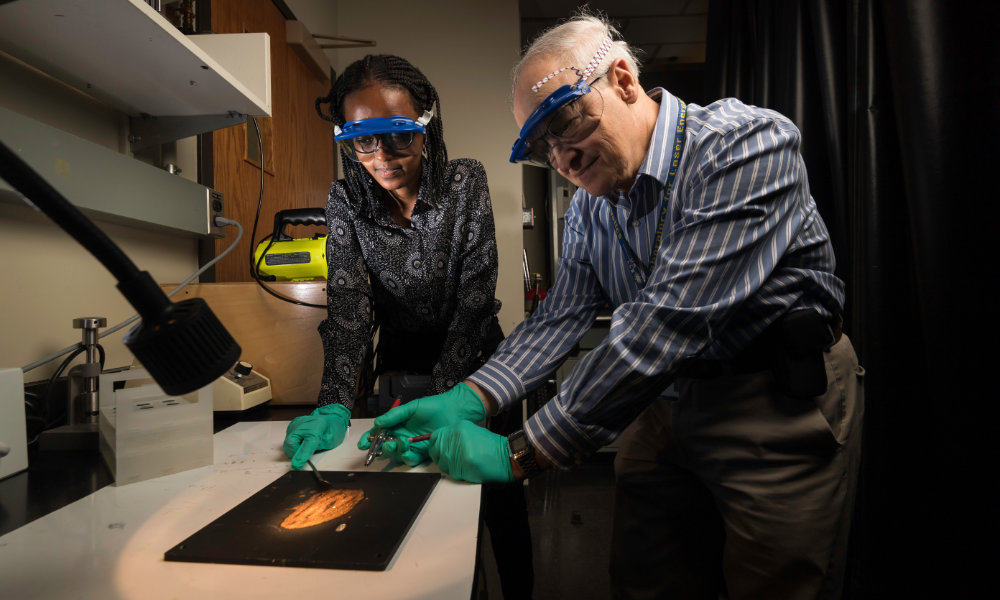 Laser Lab accepted into American Physical Society’s Inclusion, Diversity, and Equity Alliance
Laser Lab accepted into American Physical Society’s Inclusion, Diversity, and Equity Alliance
The University of Rochester’s Laboratory for Laser Energetics has joined the American Physical Society’s IDEA initiative, a new program to increase workforce diversity in physics departments and laboratories.


